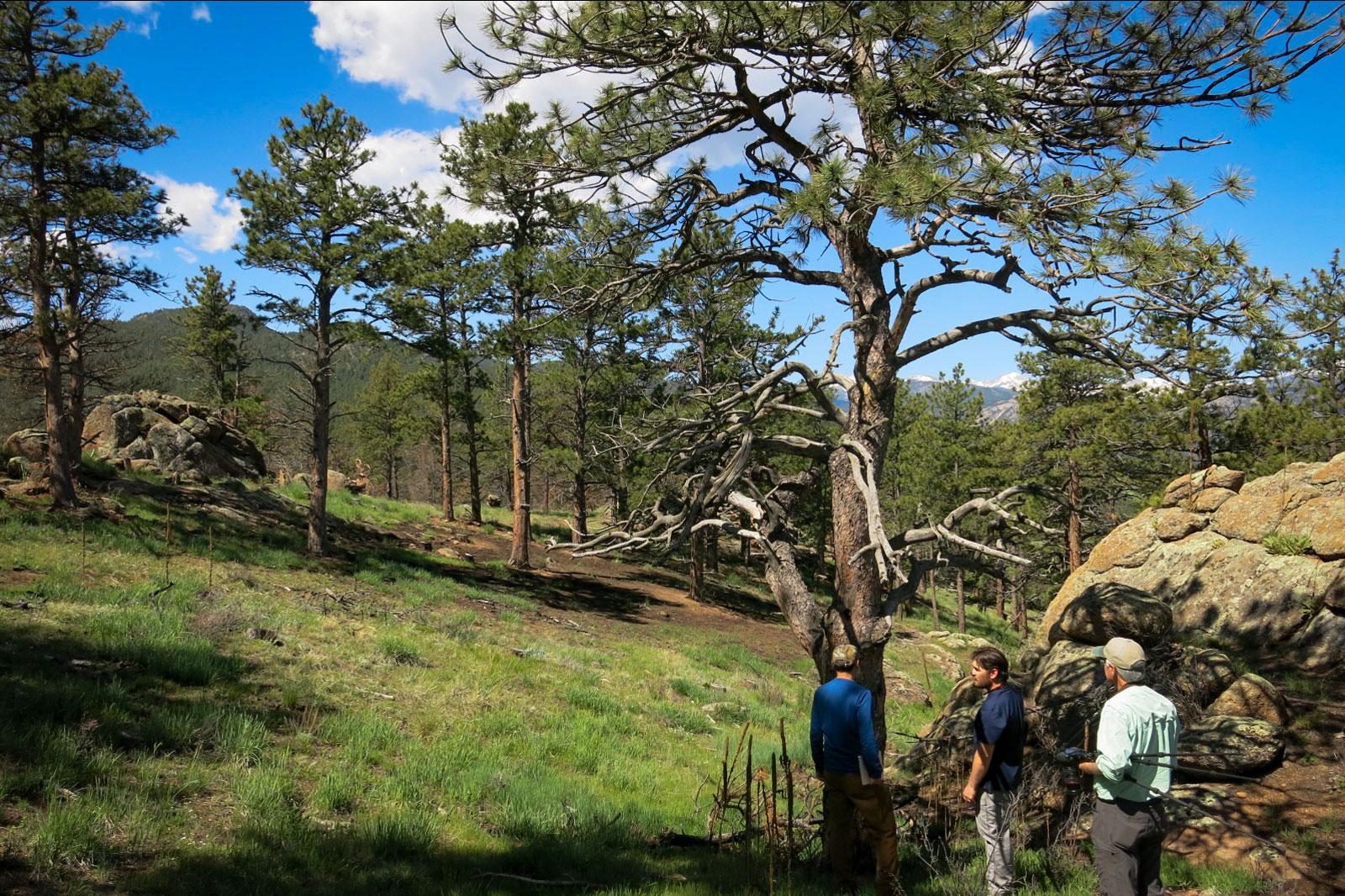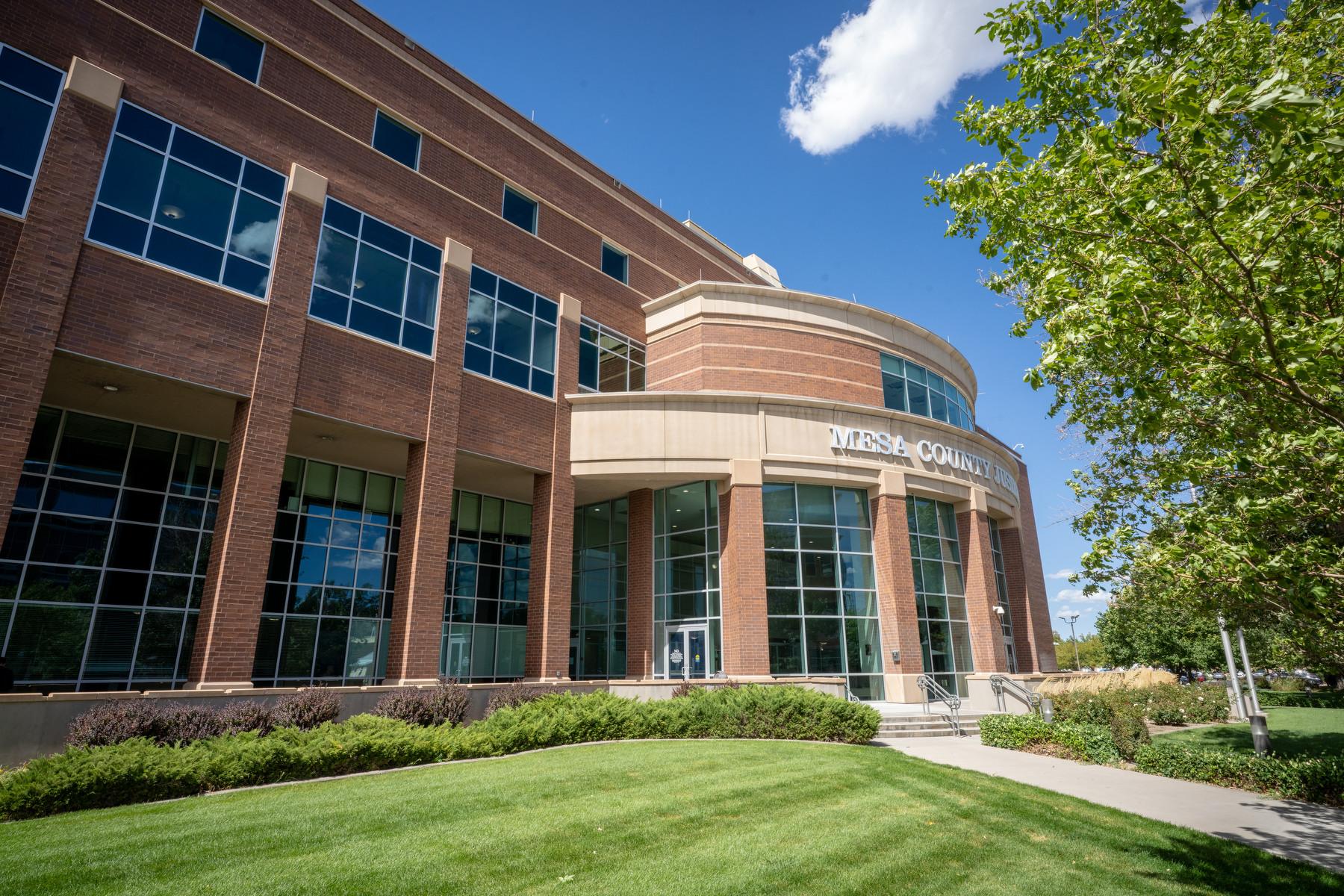

Take a moment to picture Colorado in your imagination. You’re probably seeing mountain vistas with postcard-perfect evergreen forests. There’s a good chance what you're imagining looks like Hall Ranch — a 220-acre carpet of pointy green trees flooding the landscape in Boulder County.
Ecologists who know the state’s forest history say it wasn’t always this way. Colorado’s lower elevation vistas have become too crowded.
“The first thing I see is we’re missing the meadows. Where are the meadows?” asked Tony Cheng, director of the Colorado Forest Restoration Institute at Colorado State University.
Euro-American settlement in the 1860s dramatically changed Colorado’s lower elevation forests. Before 1860, there would have been plenty of large open meadows. Small stands of ponderosa pines of various ages would have broken up the negative space. And low intensity wildfires would have moved through the stands of trees far more regularly.
Compare that to today where some crowded forests haven’t seen wildfire in more than a century. When fire comes it’s more likely to burn hot and intense, killing off all the trees.
Researchers care about this historical range because they want to make landscapes like Hall Ranch more wildfire friendly. Workers who manage forests now have specific guidelines on how to manage trees based on this framework. A new paper, published in April in Forest Ecology and Management, gives metrics to help guide and evaluate restoration projects.
“We’re not trying to exclude fire,” Cheng said. “We’re actually trying to set the landscape up to receive fire.”
Cheng, along with Peter Brown of the Rocky Mountain Tree-Ring Research organization, looked into the ranch’s historical forests and found that it’s pretty crowded today. Brown said, “there’s 10 times as many trees in these stands as there were historically.”
Boulder County seasonal workers are already thinning the herd, so to speak. If you walk around Hall Ranch, more than a thousand tree logs are stacked chest high in a large open meadow. Boulder County will sell this firewood to the public.
The end result looks like what you might have seen here 100 years ago.
Stefan Reinold, the county’s senior forestry resource specialist, used the historical research from Cheng and Brown to make parts of Hall Ranch more wildfire friendly.
“There should be pocket openings, there should be a couple of dense areas, there should be areas with five or six very large trees sitting together,” Reinold said.
As part of the overall strategy, Reinold also introduced wildfire to this patch of land a few years ago. That work doesn’t come cheap. Reinold estimates it costs about $4,000 an acre to recreate meadows and thin trees. For this 85-acre project the price tag ran about $350,000
“You can get that price down through different treatment options,” Reinold said, but there are tradeoffs. If you use a wood chipper to process logs where they’re cut down that material then litters the forest floor.
Colorado has a long way to go to get back to throwback forest conditions. Mike Battaglia, a U.S. Forest Service researcher and lead author on the Forest Ecology and Management study, found myriad tree conditions across the Front Range based on historical data. In some places, “there were a variety of tree sizes and some stands were pure ponderosa pine, and others were mixed with douglas fir,” he said.
In other words, a diversity of tree age and density is key.
A Front Range collaboration among federal, state and local forest agencies compiled a list of all forest treatments done inside a 1.5 million acre area. So far, just over 300,000 acres have been treated with fire or forest thinning.
That leaves a lot of untreated acres that could play host to hotter, more destructive wildfires during a hot and dry summer fire season.









